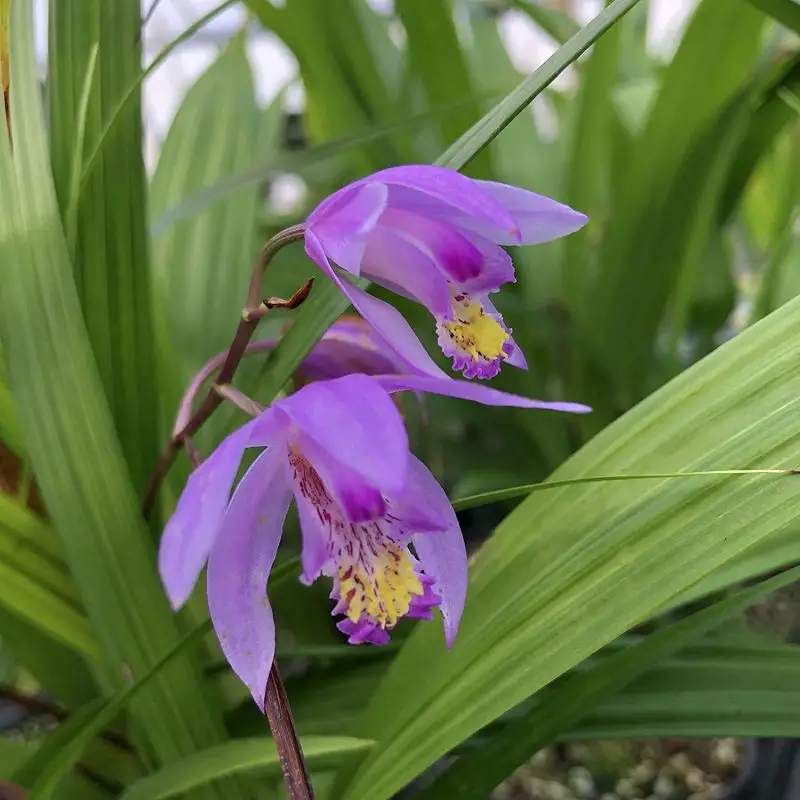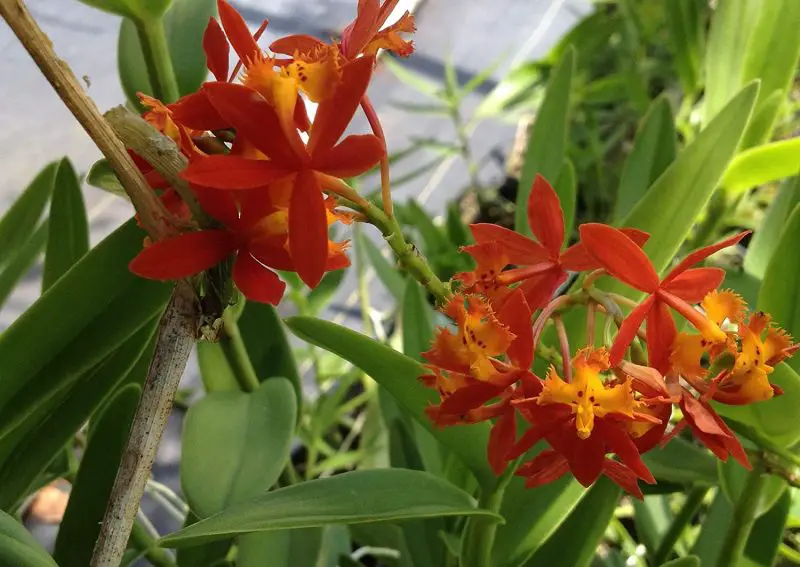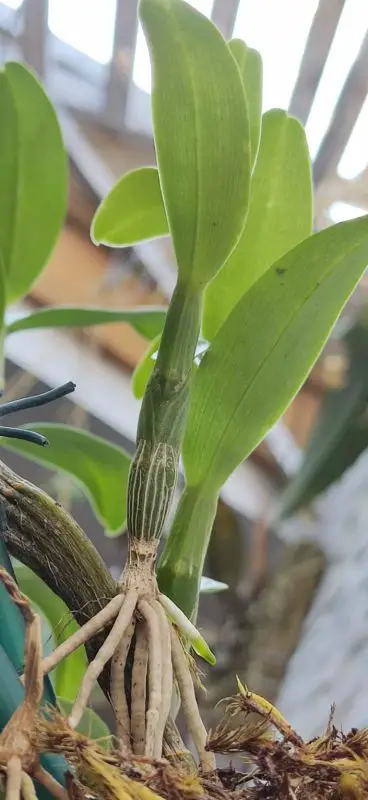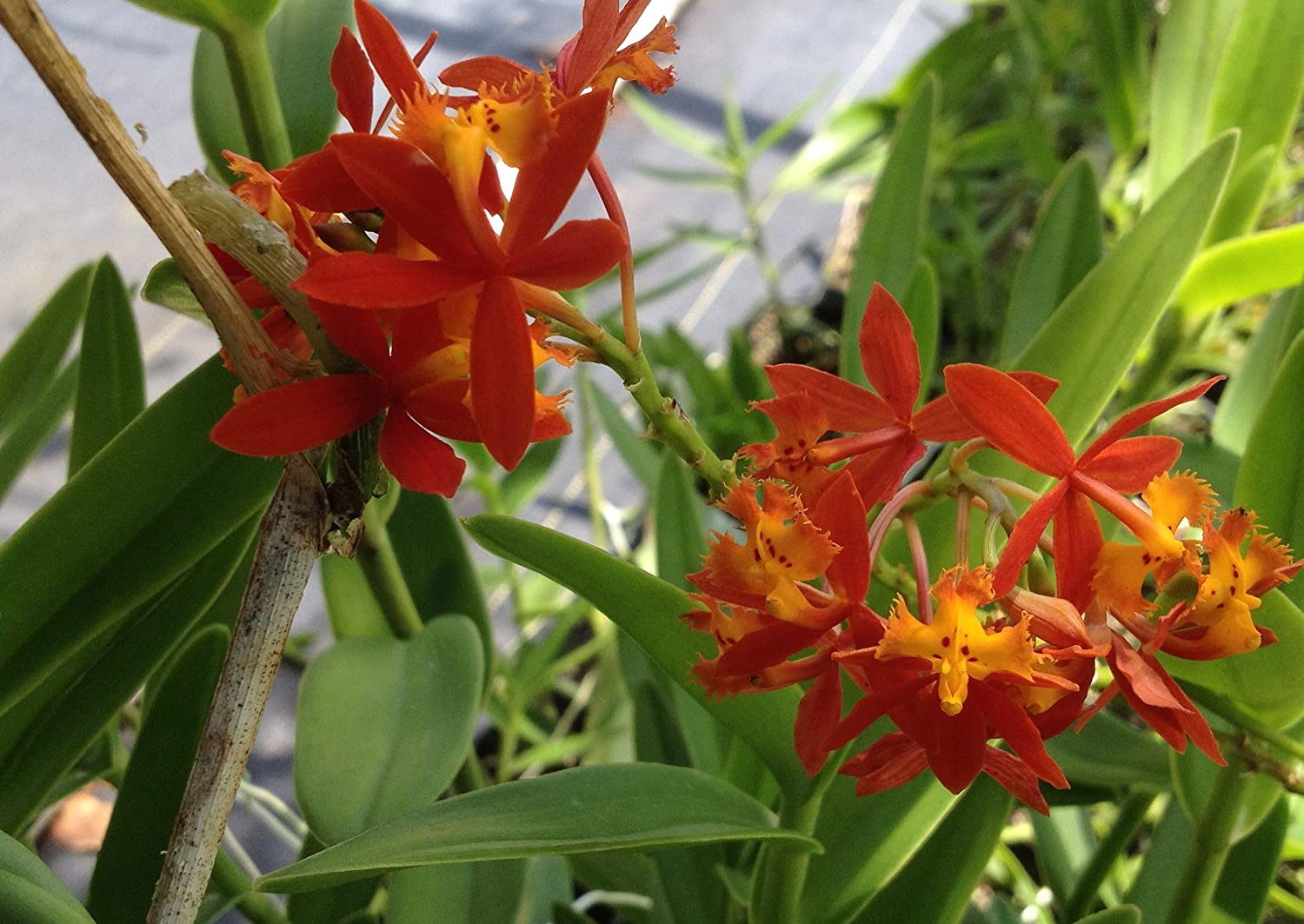 After starting to grow epiphytic orchids, I decided I wanted to try growing terrestrial orchids and so I bought some plants.
After starting to grow epiphytic orchids, I decided I wanted to try growing terrestrial orchids and so I bought some plants.
After doing some research I found a lot of information about growing epiphytic orchids and not as much on terrestrial ones.
Since they are much easier to grow and also make beautiful flowers and I was surprised they were not more popular.
Growing Terrestrial Orchids
Here is what I found. Some terrestrials are very similar in requirements to growing epiphytes but there also are some big differences.
Terrestrial orchids are also called ground orchids or hardy orchids.
Terrestrial orchids are a diverse group of plants that can be found growing in a variety of habitats around the world.
While orchids are often associated with tropical rainforests, these can also be found in temperate woodlands and even alpine meadows.
Some are quite hardy and can remain in the ground where winters are not severe.
Some hardy orchids actually need cold weather for them to flower again.
Despite their different habitats, all terrestrial orchids share a few key features.
First, they have fleshy roots that help to anchor them to the ground. They do not grow on trees or tree bark as epiphytes do.
Second, many terrestrial orchids produce seeds that are dispersed by the wind and some produce corms or tubers.
While they can be somewhat tricky to grow, terrestrial orchids make rewarding houseplants for those who are willing to put in the effort.
If you haven’t been successful growing orchids chances are they were epiphytes so give easier to grow terrestrial orchids a try.
Is My Orchid Epiphytic Or Terrestrial?
You may not know or be able to tell the difference between the 2 types of orchids.
Maybe you have an orchid without a label. Most orchids for sale are epiphytic.
But some are semi-terrestrial and some are terrestrial. If your orchid has aerial roots it will be epiphytic. But here is a video that will help.
What Kinds Of Orchids Are Terrestrial?
Here are some common terrestrial orchid genera:
Cymbidium
Spathoglottis
Bletilla
Calanthe
Cypripedium
Nervilia
Eulophia
Pachystoma
Phaius
Liparis
Acanthephippium
Erythodes
Macodes
Hetaria
Zeuxine
What Are The Benefits Of Growing Terrestrial Orchids?
There are many benefits to growing terrestrial orchids. They are relatively easy to care for and make great houseplants.
Aside from their beautiful flowers, many are very fragrant too.
Terrestrial orchids prefer a bright, humid environment, like other types of orchids.
But the right potting mix is often easier to provide than the conditions needed by other types like epiphytic orchids.
Additionally, they will need to be watered regularly as most prefer more moisture in their soil.
They should be fertilized lightly on a monthly basis, making them one of the more low-maintenance types of orchids.
How Do I Choose A Terrestrial Orchid To Grow?

For me, the first thing I want is a plant with attractive flowers. If I don’t like how it looks I won’t grow it.
When choosing a terrestrial orchid to grow, it is important to consider the plant’s native habitat.
Some terrestrial orchids are vining types, some are tall, and some are short.
You should do some research on your orchid to learn its size, growth habit, and where it is from.
This will help you to provide the right conditions for the plant to thrive.
Most terrestrial orchids prefer bright filtered light and a humid environment like their epiphytic cousins.
Some people grow ground orchids outdoors in a pot and bring them in as the weather starts to cool.
What Are The Best Conditions For Growing A Terrestrial Orchid?
As previously noted the best conditions for growing a terrestrial orchid are that most prefer bright but filtered light, and a humid environment.
Additionally, the plant will need to be protected from drafts and direct sunlight.
If you can provide these conditions, your terrestrial orchid should thrive.
There are many benefits to growing a terrestrial orchid. They are easy to care for and make great houseplants.
They can also tolerate a wide range of conditions, making them one of the more versatile types of orchids.
Terrestrial orchids also prefer a bright, humid environment, which is often easier to provide than the conditions needed by other types of orchids.
What Is The Secret To Growing Orchids?
The secret to growing orchids is providing the right conditions for the plant.
Really there is no secret it all goes back to knowing what your plant needs and when.
This includes not over or under watering and not over-fertilizing them.
Additionally, the plant will need to be protected from drafts and direct sunlight.
What Is The Best Way To Protect An Orchid From Drafts?
The best way to protect an orchid from drafts is to place the plant in a location that is out of the way of doors and windows.
Additionally, you can use a humidifier to help keep the air around the plant moist.
Can An Orchid Survive Without Soil?
Most orchids cannot survive without soil. They need a substrate in which to anchor their roots.
However, there are a few epiphytic orchids that do not require soil and can be grown in water culture or with LECA pebbles.
These types of orchids typically have specialized aerial roots that allow them to absorb moisture and nutrients from the air.
What Is The Best Way To Water An Orchid?
The best way to water an orchid is to water the plant evenly and allow the roots to dry out between waterings.
One exception is that terrestrial orchids don’t like to dry out. Water them more when actively growing and less when flowering.
Over-watering can cause root rot, so it is important not to water the plant too often.
Additionally, you should use room-temperature water when watering your orchid.
Can An Orchid Be Re-potted?
Most orchids can be re-potted every one to two years. However, it is important not to disturb the roots too much when re-potting.
Additionally, you should use a pot that is only slightly larger than the current pot.
This will allow the roots to spread out and prevent the plant from becoming pot-bound.
What Is The Best Time Of Year To Re-pot An Orchid?
The best time of year to re-pot an orchid is typically in the spring.
This will allow the plant time to adjust to its new environment before the blooming season begins.
What Is The Best Potting Mix For An Orchid?
The best potting mix for an epiphytic orchid is typically a mixture of fir bark, sphagnum moss, and perlite.
This mix will provide the plant with the necessary drainage and aeration.
Additionally, you can add charcoal to the potting mix to help keep the roots healthy.
However terrestrial orchids will grow in a loose high organic matter soil medium.
In nature, they often grow in decomposing leaves on the forest floor.
I plan to grow mine in coco coir and grow stones which are very similar to LECA.
This will provide excellent drainage and plenty of oxygenation in the pot and good moisture retention.
Can An Orchid Be Fertilized?
Most orchids can be fertilized on a monthly basis. However, it is important not to over-fertilize the plant.
Additionally, you should use a fertilizer that is specifically designed for orchids.
Over-fertilizing can cause the leaves to yellow and the plant to produce fewer flowers. So go easy on fertilization.
What Is The Best Way To Support An Orchid?
The best way to support an orchid is typically to use a bamboo stake.
This will allow the plant to climb and will provide support for the roots.
When the plant is flowering these stems are often attached to the stake with plant clips.
Can An Orchid Be Propagated?
Most orchids can be propagated by division. This involves dividing the plant into multiple parts and replanting each part in its own pot.
Additionally, you can propagate an orchid by taking a cutting from the plant and rooting it in water or potting mix.
Depending on genera some terrestrial orchids will produce seeds or tubers or corms. These can be replanted to grow more orchids.
Explaining Orchid Keiki Propagation
 Keiki propagation is a type of orchid propagation that involves applying a keike paste to the stem and taking a cutting from the plant and rooting it.
Keiki propagation is a type of orchid propagation that involves applying a keike paste to the stem and taking a cutting from the plant and rooting it.
This type of propagation is typically used for plants that are difficult to propagate by division.
Additionally, keiki propagation can be used to produce multiple clones of the same plant.
Which Orchids Are Used For Keiki Propagation?
Some orchid varieties are difficult to propagate, others are much easier, especially if they lend themselves to propagation from keikis. Phalaenopsis, Epidendrum, Oncidium and Dendrobium are just some of the orchid varieties that can be propagated through keikis with great success. https://www.plantindex.com/propagate-orchids-keikis/
There are a variety of orchids that can be used for keiki propagation. Some of the most popular types include Phalaenopsis, Dendrobium, and Cattleya.
Additionally, many other types of orchids can be propagated using this method.
What Are The Most Common Problems With Growing Orchids?
Most orchids are relatively easy to grow. However, there are a few common problems that can occur.
These include root rot, over-watering, and under-watering.
Most orchids have problems due to overwatering.
But also an improper environment like too much direct sun or low humidity can cause problems.
Additionally, orchids can be susceptible to pests and diseases.
Can I Put Orchids In Potting Soil?
Terrestrial orchids may tolerate potting soil with added organic matter. Opinions vary here.
Some information says they can grow in potting mix and even garden soil. Others say don’t do this.
But most potting soil unless heavily amended will settle and become too compacted for healthy terrestrial orchids
So personally I don’t think it’s a good idea.
Most terrestrial orchids grow in loose leaf litter and branches on the forest floor so I really think they prefer a looser grow media.
They might survive in potting soil but will they be happy and do well? I don’t know. But mine will go in a looser grow media.
You should not put an epiphytic orchid in potting soil.
These orchids need a well-drained potting mix that contains fir bark, sphagnum moss, and perlite.
Their aerial roots are specialized, getting their moisture and nutrients from the air. So burying them in potting soil is bad for them.
Growing Terrestrial Orchids Conclusion
I hope you found this article helpful. Terrestrial orchids make beautiful blooms, many are very fragrant too.
They can make great houseplants provided you follow some simple rules for providing the right growing environment.
They are generally much easier to grow than epiphytic orchids. So why not give them a try?
More reading on Wikipedia: General orchid information
Read more:Are Orchids Hard To Take Care Of? Easy Growth Formula
This post contains affiliate links.



